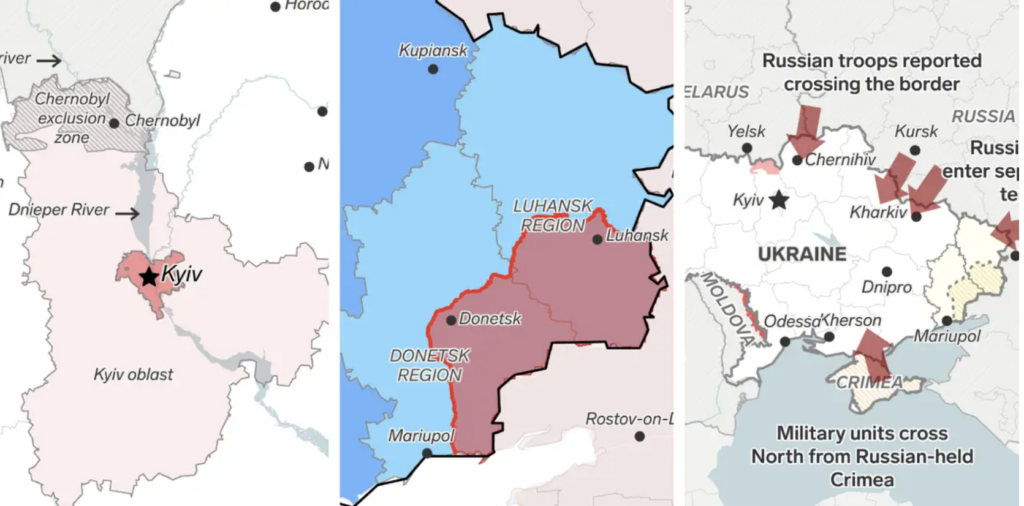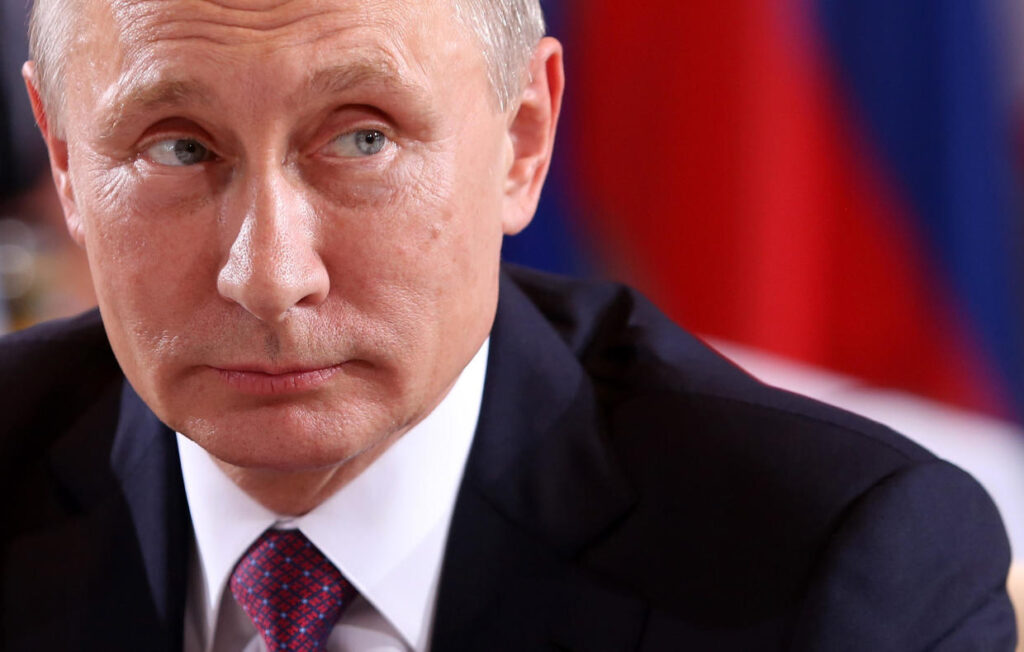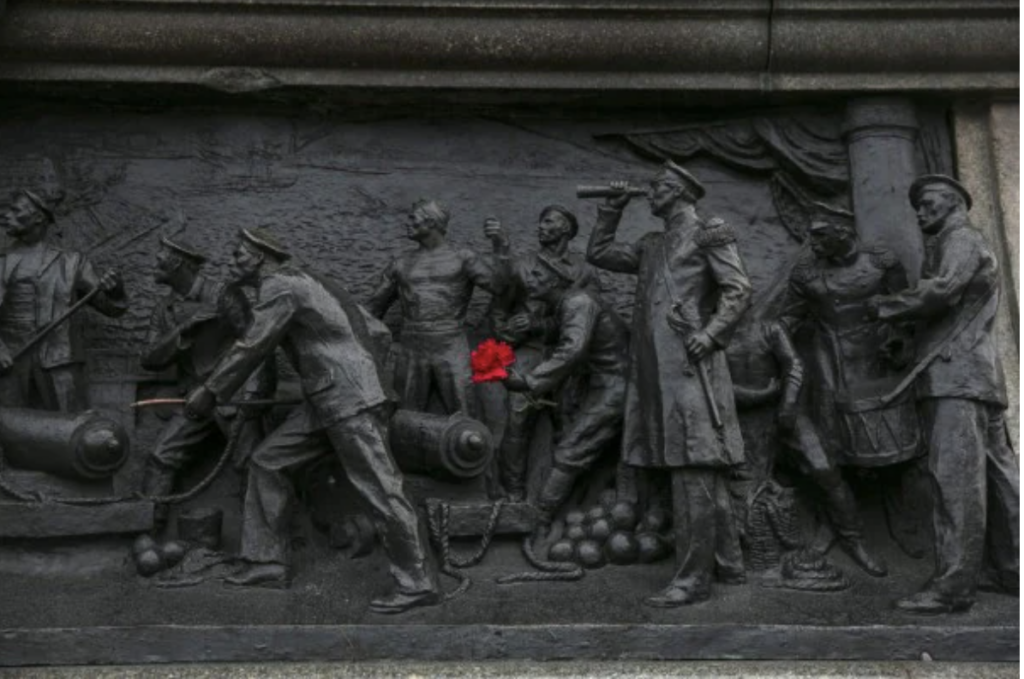
Kyiv – More than 100 Ukrainians were killed and hundreds badly wounded when Russian forces advanced towards the Ukrainian capital on Thursday, February 24, 2022, AlJazeera reports.
According to the Washington Post, Russian President Putin defended his order to use military intervention in Ukraine, saying that the “pro-Russian former government in Kyiv was illegally overthrown” and that the man he believes to be Ukraine’s “legitimate president,” President Viktor Yanukovych, asked for military backup. In response to Yanukovych’s defeat, Putin strongly warned other countries not to interfere with Russian military actions, cautioning that such actions would “lead to consequences you have never seen in history.”
The Ukrainian Health Minister Viktor Lyashko called the Russian invasion a “full-scale war,” and forced Ukrainians to mobilize over 36,000 reservists at the borders of Belarus, Poland, Slovakia, Hungary, Moldova and Romania.
USA Today reports that American President Biden met with national security officials and world leaders, prior to announcing a new round of severe sanctions against Russia and Putin. Biden believes this move will “squeeze” Russian access to global technology and financial markets by limiting imports and exports of Russian-made products.

In addition to the sanctions, Biden reaffirmed the importance of the North Atlantic Treaty Organization (NATO) alliance, which served as the heart of the U.S. led, anti-Soviet military alliance during the Cold War. NATO was established following World War II, after the treaty for which it is named was signed in 1949.
Putin has defied the most critical of the treaty’s 14 articles, Article Five, which declares that “an attack against one member state is an attack against them all.” Article Five committed all NATO countries to mutual defense, placing all of Western Europe under U.S. protection when faced with a takeover by the Soviet Union, which at that time was working towards dominating Central and Eastern Europe. The authorized deployment of additional U.S. force capabilities to Germany signifies that Biden is upholding part of the U.S.’s pledge to protect Western Europe.
NPR reports that the Russian government gave a list of demands to Assistant Secretary of State Karen Donfried in December 2021, when she came through Moscow to meet with Kremlin officials. That list featured Moscow’s ultimatums to NATO and the U.S., which demanded that:
- NATO abandon all military activities in Ukraine, Eastern Europe, the Caucasus and Central Asia.
- NATO cease establishment of any new military bases in the former Soviet states territories.
- The U.S. provide written guarantees against NATO’s continued eastern expansion, banning Ukraine, and other former Soviet states, from becoming members of the European Union (EU).
An additional request includes implementing a ban on troop deployments to Eastern Europe prior to gaining Russia’s consent, with a caveat stating that the alliance would be “prohibited from increasing troop numbers past those of 1997.” This would hinder NATO’s ability to rapidly deploy forces to formerly communist Poland, the Czech Republic and the Baltic States.
NBC News featured Ukrainian President Volodymyr Zelenskyy’s video address on February 24, 2022, where he warned that a Russian invasion could cause tens of thousands of deaths. Premium Time reports that during Zelenskyy’s speech he called the 137 deceased and 316 wounded during the Russian invasion “heroes.”
“They’re killing people and turning peaceful cities into military targets. It’s foul and will never be forgiven,” Zelenskyy said, referring to Russian forces.
According to the United Nations Refugee Agency, rocket strikes in Kyiv have displaced at least 100,000 people. CBS reports NATO Secretary General Jens Stoltenberg as saying, “Peace on our continent has been shattered. We now have war in Europe on a scale and of a type we thought belonged to history.”

For most of the 20th century, Ukraine’s territory was included in the Russian Empire as a part of the Soviet Union. Following the collapse of the Soviet Union in 1991, Ukraine declared its independence while a large portion of the Soviet nuclear arsenal was held within Ukraine’s borders.
The political relationship between Ukraine and Russia started to sour once Ukraine’s democratically elected government began to develop a relationship with Western Europe by attempting to join NATO. Russia’s 2014 invasion of the Crimean Peninsula allowed Russia the opportunity to forcefully annex a part of Ukraine for Russia.
CBS News’ Pamela Falk interviewed Ambassador Sergiy Kyslytsya, asking Kyslytsya’s thoughts about Washington’s sanctions and proposals to Russia.
“Is this an agreement that works for Ukraine?” Falk asked.
“We have full trust in what the Americans do so far”, Kyslytsya said. “We very much appreciate their willingness to discuss with us their ideas and their steps.”
Former American National Security Advisor, retired General H.R. McMaster, told CBS Mornings that Putin is working to “restore Russia to national greatness.”
“This goes back to the collapse of the Soviet Union in 1991 — what Putin saw as a disaster and what Putin has been driven by since that time and since he took over in the year 2000, you know, 22 years ago,” McMaster said. “He’s been driven by an obsession with restoring Russia to national greatness. And his plan to do that is not to make Russia great.”
McMaster believes the sustained campaign against former Soviet Union territories and former Warsaw Pact countries is designed to “restore Russian influence.”
Russia has controlled the territory since the invasion without contest. Since then, the Donbas Russian-backed forces and the Ukrainian government have been fighting a proxy war. Although a 2015 peace deal suppressed major battles being fought in the region, the fighting has not stopped. CBS News reports that more than 14,000 people have died as a result of the conflicts.
The EU has stated that this invasion could be considered “the largest conflict in Europe since the Second World War.”
Professor Serhy Yekelchyk, an expert in Ukrainian history and Russian-Ukrainian relations, has put the Russia-Ukraine crisis into perspective by demonstrating that Russia and Ukraine’s rocky relationship is nothing new.
According to Yekelchyk, the “Kyivan Rus” were a group of ninth century Norsemen who referred to themselves as Rus (pronounced “Roos”). They established control over the East Slavic communities located in what is now Northwest Russia, then moved south of the Dnieper River to create the city of Kyiv, which is now the Ukrainian capital.

March 8, 2014 A red carnation rests on a monument to the Russian navy in the Crimean port city of Sevastopol. Russia’s seizure of the Black Sea peninsula, which began about 10 days ago, has so far been bloodless, but its forces have become increasingly aggressive towards Ukrainian troops, who are trapped in bases and have offered no resistance. (Photographer Baz Ratner/Reuters)
Ukraine and Russia remained independent countries with the relatively recent collapse of the Soviet Union in 1991. Yet, Ukraine actually has deep-seated, longstanding social, cultural and economic ties to Russia. Ukrainian is the only official state language of independent Ukraine, spoken in the westernmost regions. Until recently, most urban centers and industrial areas predominately spoke Russian, except for the solidly Ukrainian-speaking regions.
This started to change around the 2000s when a new generation of school-age children started going through the Ukrainian school system. Russian aggression, combined with the introduction of the Ukrainian language, changed legislation in the region; together, these factors accelerated the switch to Ukrainian cultural practices.
According to Brookings.edu, Putin has worked to modernize Russia’s military in an effort to restore the revenues that flowed freely into “the Kremlin’s coffers between 2004 and 2014,” at a time when the price of oil was at its highest. The revitalization of Russian modernization programs can be divided into:
Advanced weapons technology for the Russian military: the creation of new weapons systems called superoruzhie (“super weapons”), creating military superiority over the U.S. and its NATO allies. One example is the fourth generation of the vaunted Sotnik, or “Centurion,” battle armor.
Increased nuclear power: At one time, the U.S. had an international nuclear monopoly. Nuclear weapons have not been used since 1945, when President Harry Truman dropped bombs on Japan to end World War II. Most countries chose not to use them because they are regarded as a crime against humanity. When the Soviet Union announced its own nuclear bomb, the Cold War forced nations to engage in an arms race to build and develop more powerful and destructive weapons.
According to AP News, Biden has made it clear that he is aware of how dangerously close the world would come to being caught in a nuclear war between Russia and NATO, since Ukraine’s invasion. Biden has reassured the world that NATO will not be sending troops into Ukraine, stating “It could trigger direct fighting between the U.S. and Russia, leading to nuclear escalation and possibly World War III.”
Regaining lost territory: For the past three decades, more than 30 countries belonging to the Soviet sphere during the Cold War have become members of NATO, including three Baltic states that were once a part of the Soviet Union. In 2008, NATO promised membership to the two former Soviet republics bordering Russia, Georgia and Ukraine. It was unsuccessful, as there was no real deadline set for the membership to be completed.
AP News reports that Putin continuously reflects upon the global humiliation Russia suffered after the Soviet collapse. By increasing Russia’s nuclear capabilities, increasing the strength and weapons technology of Russia’s military, and commandeering countries that once belonged to the former Soviet Union, Putin will accomplish what McMaster calls “[restoring] Russia to national greatness.”
